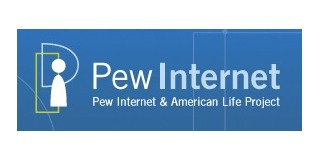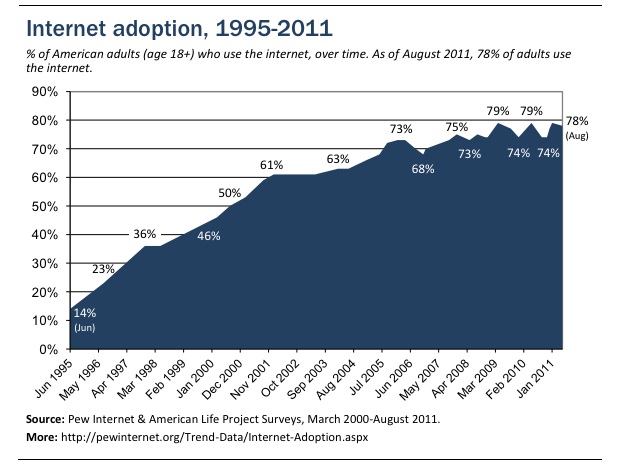Internet adoption among U.S. adults increased rapidly from the mid-’90s to about 2005. Since then, though, the number of adult Internet users has remained almost stable at around 75 to 80%. The Pew Internet & American Life Project’s latest poll shows that this trend continued in 2011. Those who are online use the Internet more than ever before, but about one in five U.S. adults is simply not online.
According to this report, “senior citizens, those who prefer to take our interviews in Spanish rather than English, adults with less than a high school education, and those living in households earning less than $30,000 per year are the least likely adults to have Internet access.” Age, household income and education have remained the strongest positive predictors of Internet use since Pew started tracking these numbers.
Virtually every U.S. household with an annual income over $75,000 is online, but that’s only true for 63% of adults who live in a household with an annual income under $30,000. The numbers look quite similar for different education levels: 94% of adults with post-graduate degrees are online, but 57% of those without high school diplomas remain offline.
Beside the obvious economic barriers to entry, though, the Pew poll also found that half of those who don’t go online do so because they just don’t think “the Internet is relevant to them.” One in five of those who are not online today think that they just don’t know enough about technology to use the Internet on their own.
On the positive side, though, this new study also found that the gap in Internet access between whites and minorities in the U.S. is slowly disappearing. Neither race nor gender, the Pew report says, “are themselves part of the story of digital differences in its current form.”

